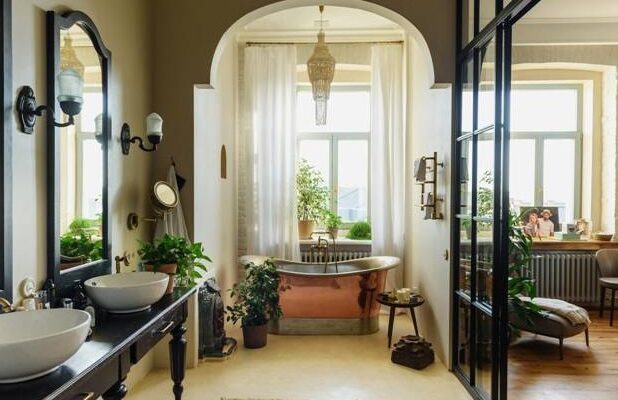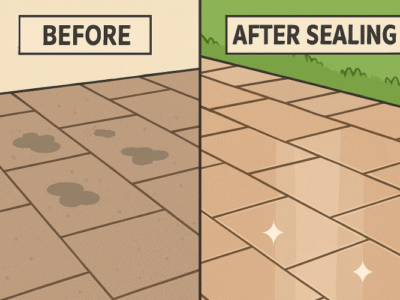Wellness isn’t just about what you eat, how often you exercise, or how many hours you sleep. It starts when you enter your home. Your home isn’t just where you live, it’s where you recharge, reflect, and reset. The environment around you influences your mood, focus, and even your stress levels. If your space is cluttered and chaotic, that energy follows you. Life decluttering begins with house decluttering.
Designing a wellness-focused home isn’t about luxury or perfection. It involves creating quiet, clear, and comfortable spaces. From your bathroom to your bedroom, every room can support your well-being with just a few thoughtful choices.
This guide will help you take intentional steps toward a healthier, more peaceful home.
1. The Power of Decluttering
Decluttering is more than tidying up. It’s about making space physically and mentally. When our surroundings are overflowing with unused or unnecessary items, it becomes harder to focus and unwind.
Avoid painting an entire room in one day. Let go of duplicate items, things you haven’t touched in years, and anything that makes you feel stressed or guilty just by looking at it.
2. Make Your Bathroom Relaxing
The bathroom sets the day’s mood.
One major consideration is whether a bathtub or a modern shower better fits your lifestyle. A soaking tub offers deep relaxation and is great for unwinding after long days. A spacious, modern shower with excellent water pressure and proper lighting can feel equally rejuvenating. If space and budget allow, having both offers flexibility for different moods and needs.
Since bathrooms require plumbing, ventilation, and careful installation, it’s wise to work with a professional bathtub and shower remodeling contractor. A reliable contractor can guide you through the design process, ensure high-quality materials are used, and make sure the result is both functional and relaxing.
3. Design a Bedroom That Supports Better Sleep
Bedrooms should be the most relaxing rooms. That doesn’t happen without you lifting a finger; it’s created through mindful choices. Start by minimizing distractions. Keep screens and electronics out if possible, or at least set limits on their use. Invest in blackout curtains or shades to block external light and support your body’s natural sleep rhythm.
Choose calming, muted colors that help ease your mind at the end of the day. Dusty greens, muted beiges, and soft blues work beautifully. Prioritize comfortable bedding made of breathable, natural materials. Details matter too a bedside lamp with warm light, a simple diffuser with lavender oil, or a white noise machine can all help establish a soothing bedtime routine.
4. Bring the Outdoors In: Use Plants for Mood and Air Quality
Indoor plants do more than brighten up a room; they help you feel better. Studies have shown that greenery can reduce stress, improve air quality, and boost mood. Even if you’re not a natural gardener, there are low-maintenance plants that can thrive in most indoor environments.
Start small. Place a snake plant in your living room, a pothos near the kitchen window, or a peace lily in the hallway. These plants require little attention but offer big benefits. They add softness, movement, and life to your space.
5. Create a Mindful Kitchen Space
Sustenance begins in the kitchen, not simply cooking. Creating a wellness-focused kitchen means making it both functional and inviting. Start by organizing your pantry and fridge so that healthy choices are front and center. Use clear jars for grains, nuts, and snacks to create order and reduce decision fatigue.
Warm, ambient lighting and a clutter-free countertop make cooking feel like a calming, creative task rather than a chore. Display a bowl of fresh fruit, keep your favorite mug within easy reach, and choose natural materials for storage like wood, ceramic, or glass. Mindful kitchens promote slowing down, eating well, and enjoying meal prep.
6. Add Wellness Zones for Movement and Meditation
A room isn’t needed for wellness routines. A wellness zone can be as simple as a quiet corner with a yoga mat, a meditation cushion, or a chair dedicated to stillness and breathwork. What matters is that you set the intention and keep the space distraction-free.
Pick a spot in your home where you feel at ease. Maybe it’s near a window with natural light or in a room that tends to be quieter. Keep the area clean, and only include items that support your practice, perhaps a few calming candles, a plant, or a folded blanket. By creating a physical boundary for wellness, you’re more likely to follow through with regular movement, mindfulness, or stretching. Over time, this space becomes a signal to your brain: it’s time to slow down, focus, and reconnect with yourself.
7. Choose Materials and Colors that Promote Calm
Your surroundings affect your mood without you realizing it. When you touch a smooth wooden table or walk across a soft wool rug, there’s a sense of comfort that synthetic or overly shiny materials just don’t provide. Natural materials tend to have grounding qualities that connect you with the earth, even if you’re indoors.
Use materials like cotton, linen, bamboo, and stone where you can. They add softness and substance without overpowering. As for color, stick to muted tones like warm neutrals, soft greens, gentle greys, and dusty pastels. These tones promote relaxation and don’t overstimulate your eyes or brain.
8. Personalize Your Space with Meaningful Items Only
Wellness at home isn’t about removing all personality. Surround yourself with important things. When your space reflects your values and experiences, it becomes more than just functional, it becomes comforting.
Display artifacts that bring back good memories. A photo of a meaningful moment, a small keepsake from a trip, or a favorite piece of art can bring a sense of connection. Avoid decorating with things you feel indifferent toward, or that add visual clutter. Let your home be a space where every object feels chosen, purposeful, and peaceful.
Creating a wellness-focused home doesn’t require a perfect layout or expensive upgrades. It’s about making consistent, thoughtful changes that align your space with your well-being. When you design your home with purpose, you don’t just improve how your space looks; you transform how it feels. That feeling of calm, care, and balance begins at home and reaches into every part of your life. So, start today and let your home become a partner in your wellness journey.
If you want morе еxciting contеnt, visit. Globallyviz.com














Comments